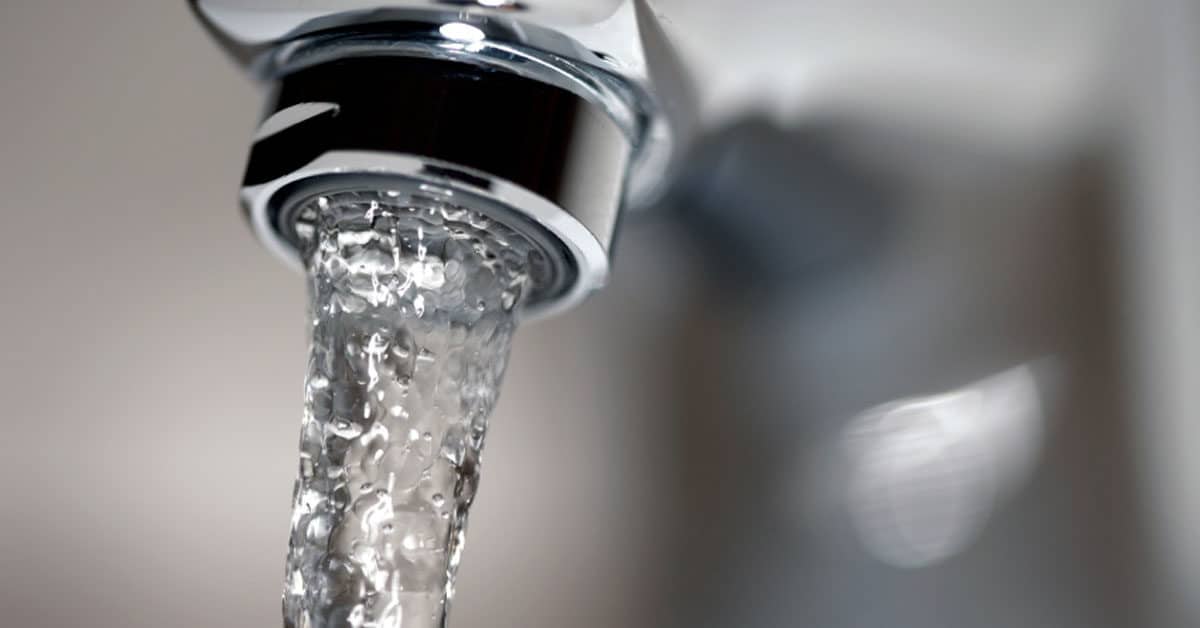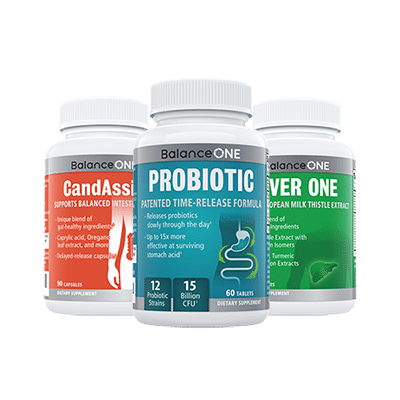How Does Chlorine Affect Your Immune System?

Is there chlorine in your water supply? The answer is almost certainly yes if you live in the US or many other parts of the world. This means that if you are drinking unfiltered tap water and taking unfiltered showers then you are exposing yourself to a major potential cause of Candida overgrowth. Chlorine can kill your gut flora just like antibiotics.
So why is this harmful chemical added to our drinking water? Chlorine is a highly efficient disinfectant that kills harmful organisms and prevents the spread of waterborne diseases like dysentery, but it does come with a cost.
Although killing pathogenic organisms is clearly a good thing, chlorine can weaken your immune system and weaken its ability to fight off a pathogen like Candida albicans.
There are several ways that you can reduce your chlorine exposure. In today’s post we’re going to look at exactly how chlorine can affect your immune system, and just what you can do to prevent this from happening.
Table Of Contents
How Chlorine Can Lead to Candida Overgrowth
The idea that chlorine is harmful to us is not controversial at all. In fact both the Environmental Protection Agency and the Center for Disease Control list it as a harmful substance. However, they focus mostly on the effects that large amounts of chlorine can have on the upper respiratory tract. (1, 2)
A less obvious, but equally troubling, side effect of chlorine happens in your intestines. When this powerful disinfectant passes through your stomach and reaches your gut, it can kill off or suppress many of the beneficial bacteria that live there.
The lymph tissue that lines your digestive system creates over sixty percent of your immune cells. It decides what bacteria and elements get through and which ones should be eliminated. It acts as a barrier for bad bacteria and a transport for good elements. Another role that your beneficial bacteria play is by communicating with this part of your immune system to focus it on ‘foreign’ microbes.
These bacteria also help with digestion, regulate the acidity in your gut, and form an important part of your immune system themselves. Among other things, destroying that delicate balance of flora can weaken your resistance to disease.
When chlorine gets in your system, it can destroy or weaken much of your beneficial intestinal flora. (3)
This not only disrupts your digestion and causes issues such as bloating and indigestion, but also also allows the Candida yeast to run rampant and weaken your immune system. An imbalance in your gut flora is an opportunity for a fast-growing pathogenic yeast like Candida albicans.
If your colonies of ‘good bacteria’ are destroyed by an external factor like antibiotics or chlorine, there is suddenly less competition in your gut. This provides the Candida colonies with the space and nutrients they need to create biofilms, expand throughout your gut, and produce their toxic byproducts in larger amounts.
This intestinal Candida overgrowth can affect your digestion, damage your intestinal walls, and further weaken your immune system.
Why Is Chlorine In Your Water Supply?
More than 98% of US public water supplies are chlorinated, so first let me explain why all that chlorine is in your drinking water. It’s there because chlorine is a powerful disinfectant that kills more than 99% of the harmful organisms and bacteria in your water supply. It kills disease-causing pathogens like cholera, typhoid, and dysentery by dissolving their cell walls.
Would it be better for all of us if chlorine weren’t used, especially since regular chlorine exposure is a possible contributory factor to Candida? Not necessarily.
Public officials have to tread a fine line between preventing disease in our water and using as few harmful chemicals as possible. If the chlorine was removed, it would certainly eliminate some of the negative effects of chlorine on our immune systems. But it would also expose us to harmful pathogens that could result in other health problems.
Of course, although chlorination of our water is generally a positive thing, that doesn’t mean that we actually need to drink the chlorine. By using simple water filters in your home, you can enjoy all the benefits of disease-free chlorinated water, while still eliminating your exposure to chlorine.
How Can You Reduce Your Chlorine Exposure?
Here are a few steps that you might want to consider as you try to limit your chlorine exposure:
- Drink filtered water (either from a whole-house filtration system or by using Brita-style filters in your kitchen).
- Don’t use chlorinated bleach in your laundry.
- Be aware that pools and hot tubs contain chlorine too. Avoid them or shower well after using.
- Take bottled water with you when you go out.
- If you do find yourself regularly exposed to chlorine, take a good probiotic to maintain your gut flora.
Let’s take a look at those in more detail.
The first step to reducing your chlorine intake is by starting with the water you drink. Most cities add chlorine to their water, so the best solution is a whole house filtration system that removes it before it even enters your house. You can buy different kinds of systems, but be sure to buy one that filters your entire water supply. That way, not only will you have pure drinking water, but the water you cook with, bathe with, and wash your clothes with will be free of chlorine.
Not all filtration systems remove the same chemicals. Talk to a good salesperson and do your research to find out which systems most effectively remove the chlorine from your water. You may end up paying more for a whole house system but it will be worth it for your health.
If you cannot afford a whole house water filtration system, get individual filters for your kitchen sink to keep your drinking and cooking water safe. You can also buy a shower filter or one for your bathtub. Don’t forget your bathroom sinks too.
Your water supply is not the only source of chlorine in your daily life. Do not buy chlorinated bleach for your laundry, and check the list of ingredients in your laundry supplies. Remember to also check your cleaning products for chlorinated bleach as an additive. Whenever possible, it is best to use natural products that are gentler on you and what you are cleaning.
Another area that is important to consider are pools and hot tubs. Public pools and hot tubs contain high levels of chlorine to kill bacteria from multiple users. You should really try to avoid these as much as possible. A refreshing swim in the sea or fresh water is a much healthier option.
When you go somewhere like work or shopping, take your own bottled water or buy it rather than drinking from public places. You will never be able to avoid all sources of chlorine, but the more you can, the stronger your immune system will be and the better chance you have of beating your Candida overgrowth.
Just because something has been made available for public use does not mean it is safe for everyone. This is the case with chlorine and new studies are starting to show its harmful effects. (4)
What happens if you are regularly exposed to chlorine and unable to do anything about it? Take a good probiotic. This will help to balance out the effects of the chlorine and maintain the health and diversity of your gut flora. We recommend the Balance ONE probiotic.
Candida overgrowth is just one of many health problems that excessive exposure to chlorine can cause. So if you are following a strict Candida diet, taking your antifungals and probiotics and you still can’t get rid of Candida, consider taking steps to reduce your chlorine intake as much as possible.
You will never be able to completely avoid chlorine, but reducing your exposure can boost your immune system and help you to beat your Candida. If you want to learn more about boosting your immune system, our Ultimate Candida Diet treatment plan recommends a list of immune boosting supplements.

3-Month Candida Elimination Kit Start Your 3-month Candida Cleanse
This Candida Kit contains all the supplements recommended on the Candida Diet:
- LIVER ONE to process and remove the toxins created by Candida.
- CANDASSIST to inhibit and weaken the Candida colonies in your gut.
- PROBIOTIC to replace the Candida yeast with probiotic bacteria.
Plus... the CANDIDA DIET RECIPE BOOK with 50+ low-sugar recipes

Very good information for a Canada sufferer
Hi Lisa,
I’m going through the candida detox & diet at the moment, following your programme (my 3rd week now). The progress so far is fantastic, feeling much better already (although beating those sugar cravings is still hard…). One of my key activities to keep fit is regular swimming, so I’d go to a public swimming pool 3-5 days a week for a 30mins swim. I do shower afterwards within the facility. I’ve stopped it for 3 weeks now, but would be keen to start going back say 2-3 days a week. Do you recommend it? Or do you think it could affect the treatment? Many thanks for all the useful information you provide!
Hi Magda, I’m glad that its helping! You should be aiming to reduce your overall exposure to toxins. So if you are taking positive steps in other parts of your life (like drinking filtered water, for example), then you might be OK to use a chlorinated pool. As you suggest, showering after your swim is a great idea. Your body is designed to cope with a certain amount of exposure to toxins like chlorine, but you just have to be careful not to overload it!
hi Lisa
was wondering if exposure to chlorine over time can bring on such auto immune decease such as hidredinitis supperativa?